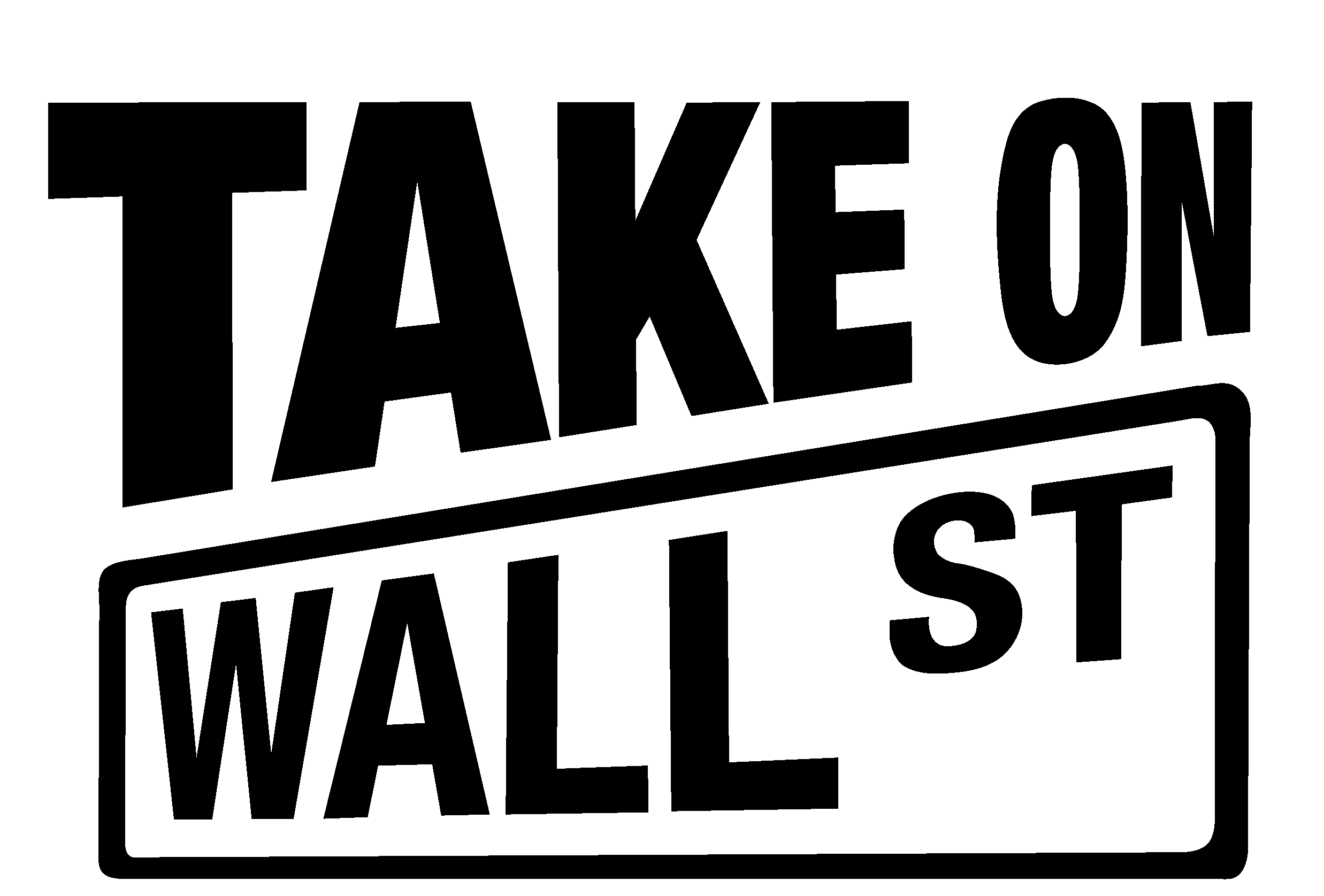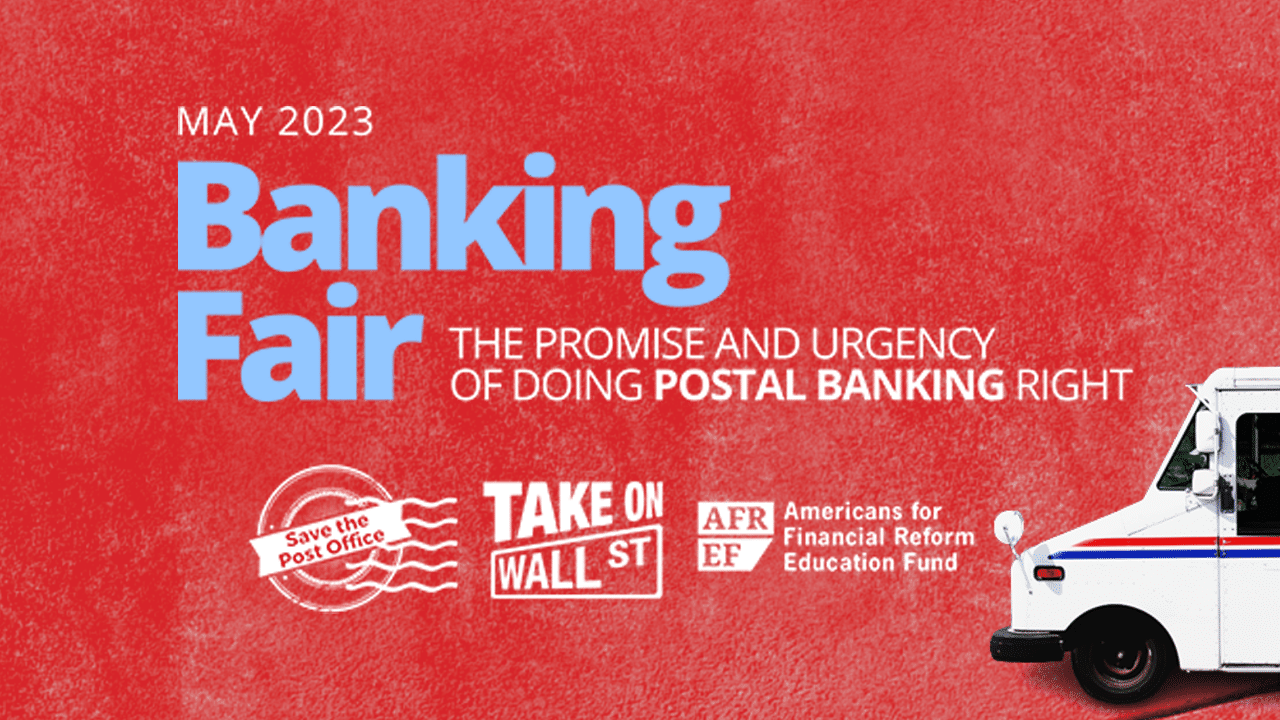This post was co-authored by Aditi Sen, Managing Director of Research and Campaigns and Annie Norman, the Save the Post Office Campaigner at the Take on Wall Street campaign, both of Americans for Financial Reform Education Fund.
The need for a public banking option is urgent. Nearly 10 million households, a disproportionate number of whom are people of color, are unbanked in the U.S. Unbanked or underbanked households must pay expensive fees for non-bank financial services to access their own money for paying bills, cashing checks, remittances, rent, and ATM withdrawals—this can cost them upwards of $2,400 annually. The widely trusted U.S. Postal Service has a long history of postal banking and is physically located in every community, making it the sensible option to provide a public banking solution. But this requires a good faith effort, done well.
A new report released today, “Banking Fair The promise and urgency of doing postal banking right,” by The Save the Post Office Coalition, Take On Wall Street, and Americans for Financial Reform Education Fund, calls for a public banking option to be restored within USPS. The Post Office has a long history as a public service institution, despite the seeds of privatization sown by Republican presidents and Congress since 1970. Up until the 1960s, many relied on the trusted postal savings system over private banks after banking scares in the early 1900s.
“Banking Fair” provides an eye-opening analysis of how USPS leadership is thwarting efforts to revive a postal banking option by halting a new check-cashing program won by advocates in 2021, and refusing to roll out the additional financial services–bill payment, wire transfers, and low-fee ATMS–that the USPS Inspector General has already deemed legal for the agency to provide.
The paper outlines the weaknesses with the current state of the USPS check-cashing pilot program, which has stalled at four post offices that serve wealthier zip codes, faced gratuitous legal challenges by the conservative Postal Regulatory Commission—a Trump-era holdover—had little marketing to let people know the product exists, and only covers checks below $500 for a hefty $5.95 fee.
All this comes at a time when demand for a well-designed postal banking option is significant. Wall Street banks’ standard practice is to lure people in with false promises of free checking accounts, only then to tack on a fee just for having an account, requiring minimum balances, and charging predatory overdraft fees. Even the industry’s efforts to increase access to traditional bank accounts through BankOn, a voluntary, bank-led partnership has made little scalable impact, with only 400 of the U.S.’ 10,000 banks participating. Furthermore, the BankOn initiative has no requirement that the accounts be free, and banks are free to close these accessible accounts at any time if they are not profitable.
The private banking industry either can’t or won’t do what needs to be done to stop preying on people–the junk fees bring in too much money for them. We need a public option for banking that is focused on providing a basic service to people who need it as opposed to satisfying wealthy shareholders, and USPS is perfectly placed to provide that public option.
The U.S. banking system is designed to serve a particularly well-off and financially secure section of people. Those who belong to this more privileged class do not often worry about things like minimum account balances or overdraft fees—for them, basic banking is safe, convenient, and trustworthy. They can access their money easily and without cost, whenever they choose. Basic banking is a crucial, yet largely invisible, pillar of their financial life.
For low-income individuals and households, the banking system plays a very different role. Racist and classist rules and guidelines based on exclusionary logic such as minimum balance requirements make traditional banks expensive, inaccessible, and often predatory towards those who simply cannot afford to meet such standards. Capricious overdraft fees are a source of constant stress and can send many into a spiral of owing money they do not have.
It’s abundantly clear that unbanked and underbanked communities need a public banking option, yet Louis DeJoy’s USPS is moving in the opposite direction. It’s almost as though they’re working towards making existing financial services obsolete: at present, an immigrant wanting to send home $200 a month to their family in remittances would end up spending an additional $830 in fees per year if they tried to do so through the Post Office’s Dinero Seguro program. In perhaps the most under-reported and egregious move in DeJoy’s arbitrary postal service price hike agenda, he imposed a 300 percent price hike on essential services that are used primarily by immigrant and low-income households. Money orders, long a lifeline for low-income people looking to pay rent, faced double-digit hikes too, and now cost twice as much at the Post Office as they do at Walmart.
Getting postal banking right is just the beginning of what’s possible for the Postal Service. DeJoy isn’t going to be able to price hike his way out of a deficit, and he should instead be considering the USPS OIG’s report, which estimated that postal banking could generate as much as $8.9 Billion in annual revenue, giving the Post Office a much needed lifeline.
DeJoy and the USPS Board of Governors must ensure the Postal Service is ready to meet the challenges of the future by exploring creative ways to generate revenue and provide community services, from WiFi in the parking lot to checking on seniors, in a fair and equitable way. The People’s Postal Agenda provides a roadmap for the future of a Postal Service that highlights“innovations to address unmet needs and ensure this treasured public agency can continue to serve all Americans for generations to come.”


Leave a Reply